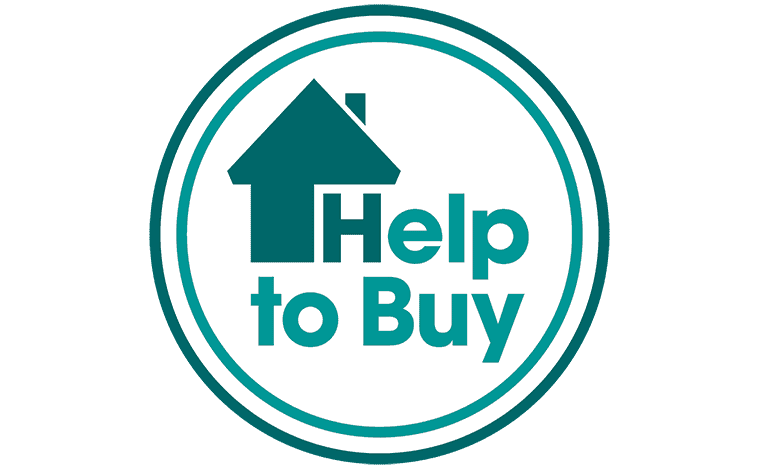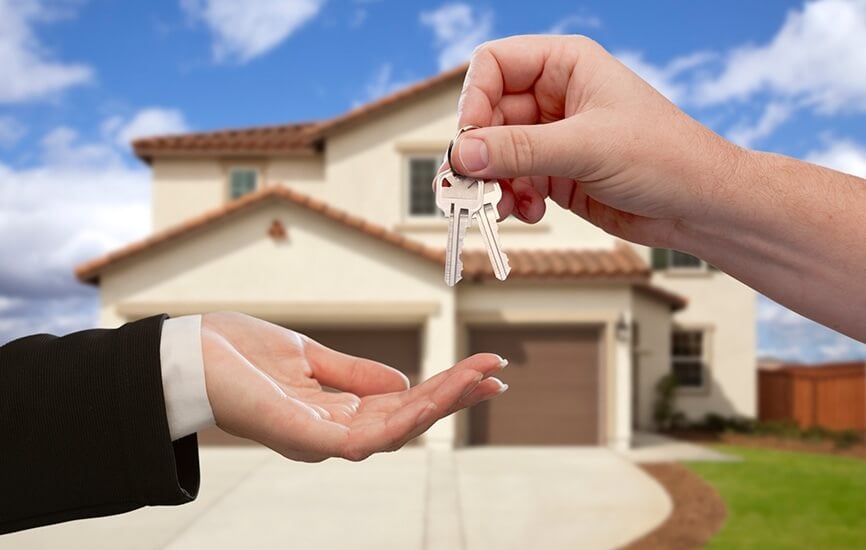What is Help to Buy?
Help to Buy is a government scheme that means you could buy a home with a deposit as low as 5%. Introduced in the March 2013 budget, the scheme was designed to make it easier for people with smaller deposits to get on the property ladder, and for existing homeowners to move house.
How does Help to Buy work?
With a Help to Buy Equity Loan, the Government lends first-time buyers up to 20% of the cost of their newly built home, which means some only need a 5% cash deposit and a 75% mortgage to make up the rest. And, you won’t be charged loan fees on the 20% loan for the first five years of owning your home.
Since the launch of the Help to Buy: equity loan scheme (1 April 2013 to 31 March 2017), 120,864 properties were bought with the support of the scheme, according to official figures. 81% of these sales were to first-time buyers.
There are two fundamentals to the scheme. The first is an Equity Loan scheme, which is open to both first-time buyers and home-movers but is restricted to new-build homes. So, if you’re looking for a modern place to live, a Help to Buy equity loan could be a good way to reduce the deposit you need to save up for. Even if you buy through Help to Buy and have a mortgage for less than the full price of the property, you become the legal owner with 100% title to your home.
So, if you wanted to buy a house for £400,000 with a 5% deposit you would need:
- £20,000 deposit
- £300,000 mortgage loan
- £80,000 loan from the government
Taking advantage of the Help to Buy scheme has two main benefits. Firstly, you only need a 5% deposit. Secondly, as you’re only borrowing 75%, you will be able to acquire better mortgage rates.
Help to Buy: London rates
To reflect the current property prices in London, the government will lend buyers up to 40% of a new-build’s price, rather than the 20% limit that applies outside of London. This means the maximum you can borrow from Help to Buy in England is £120,000, but up to £240,000 for London. There is no minimum amount.
How much do you need to pay?
Help to Buy equity loans are interest-free for the first five years. After this period, you start incurring a monthly interest fee, which starts at 1.75%. This increases yearly by any increase in the Retail Prices Index, plus 1%.
Because your equity loan from the government doesn’t decrease in size (unless you opt for early repayment), over time the cost of the admin fee could become pretty substantial, especially if inflation increases significantly. These fees come in addition to mortgage repayments.
Buyers must repay the equity loan in full after 25 years, or when your mortgage term ends, or when you sell your home – whichever happens first. The repayment is equal to the market value of your loan at the time, rather than the same quantity that you borrowed.
Following the purchase, buyers can also at any time make voluntary part repayments (also known as ‘staircasing’), or even a full repayment, of the Help to Buy assistance at the current market value. The minimum voluntary repayment is 10% of the market value at the time of repayment.
When participating in the Help to Buy scheme, you could either end up paying back more or less than you borrowed. This depends on whether your home increases or decreases in value.
For example, a person might take a 20% equity loan to buy a property worth £400,000 – so the loan is £80,000. However, when they decide to sell, the property’s value has increased to £500,000. The amount needed to repay the loan now jumps to £100,000, 20% of the new value of the home, not the amount first borrowed.
Extra fees
Buyers also need to pay a monthly management fee of £1 per month from the start of the loan until it is repaid. This fee, as well as the interest fees, do not count as repayments to your equity loan, so, unfortunately, do not reduce the amount owed.
To qualify for Help to Buy:
- You need deposit of at least five percent
- The maximum purchase price is £600,000 (though this limit changes for Help to Buy ISAs)
- The property purchased must be your only residence - you cannot rent out your existing home and buy a second home with Help to Buy
- Buyers must take out a first charge mortgage with a qualifying lender.
- Help to Buy buyers outside London must be able to fund up to 80% of their selected property through a conventional mortgage and deposit.
- London Help to Buy buyers must be able to fund 60% of the property through a conventional mortgage and deposit.
- Buyers cannot use the scheme if they require the main mortgage to be more than 4.5 times their household income.
The Local Help to Buy Agent will assess your application to ensure that you are in a position to afford a conventional mortgage for the purchase.
The Help to Buy scheme is available in England only. The Scottish Government, Welsh Government and Northern Ireland Housing Executive run similar schemes – check out their websites to find out more.
Where are Help to Buy homes available?
Help to Buy homes are available from house builders registered to offer Help to Buy homes in England. Registered builders will make it clear in their advertising if Help to Buy homes are available on their development sites.
Your Local Help to Buy Agent can also help you find out more about the availability of Help to Buy homes in your area.
What’s next? There are four main steps to successfully purchasing a property with the Help to Buy scheme. We’ll cover those in detail in another post.
For more detailed tips on buying a property using bridging, read more here.
Renting vs Buying - What Are The Pros and Cons?
The decision as to whether to rent or buy is a perennial problem if ever there was one. For many of us, the process of moving out in itself symbolises the transition to adulthood. For many more, it is buying a home that really and truly means you’ve made it, and who eagerly await the moment they can jump onto the property ladder. However, simply buying a home isn’t always that straightforward.
House prices vs rent prices
For example, the price of the average UK home has risen in the past decade. In London, this equates to nearly a 70% rise in 10 years. Whilst for the first time in at least five years according to Rightmove, rents have dropped in Britain by the end of summer 2017. Outside of London, rents dropped by 0.2% in the months from June to September.
However, London itself still remains one of the most expensive cities in the world to rent in. In other words, either buying or renting is going to be of considerable cost and there are pros and cons to both. Let’s weigh them up.
The importance of freedom?
Both renting and buying provide you freedom. However, the way in which each option gives you this freedom differs entirely, with advantages and disadvantages to both. Here is a short summary:
Renting
If you're tired of living at home or with annoying parents or siblings, getting out and renting is a quick way to get a place and make it your own.
With renting, you are signed up to a fixed contract, meaning you have the option to leave fairly quickly when the minimum tenancy period expires without having to worry about a costly mortgage to pay for.
The option to move to another city or country entirely can be achieved fairly quickly as a result, so you have wide range of choices of places to live.
If your personal circumstances change, renting gives more flexibility. If you need to change jobs or anticipate that you will have less money than previously, you can look for somewhere cheaper to rent without being tied down to the responsibility of a mortgage.
Renting might give you the chance to live in an area you’ve always dreamed of, but couldn’t otherwise afford to live in if the only option was buying.
Not having to pay huge upfront costs for a house or flat (usually a month’s rent is required, but this is considerably less than a house deposit), means decisions to move can be made swiftly.
Buying
If you buy a house, then you have the freedom to make home improvements you would find difficult to make rent. Want to put up some shelves in your bedroom, paint each room in all the different colours of the rainbow, or even paint a mural dedicated to your love of cats? Well, you can do just that if you really wanted! Obviously, improvements are within reason, and perhaps not as extreme or silly as those previously listed, but not having to ask permission from a landlord for making alterations is a definite advantage.
Many landlords aren’t avid fans of tenants having pets in their properties and are extremely strict with rules regarding them. In the worst case scenario, if caught with a pet in the property this could lead to eviction. With buying, the choice is up to you! Buy a goat if you like! (or maybe not).

Whilst it may take longer to save for a house deposit, it provides an investment for the future that renting doesn’t. It is often said that paying rent is like letting money going down the drain after all. The house could accumulate in value in later years enabling you greater freedom in the future if you should decide to sell, allowing extra money to spend on whatever you would like! This could be anything from a new bigger home, holidays or a more comfortable retirement.
The Guardian writes that house prices are strong at the moment, going up the fastest in the last 8 months of 2017. You always have lots of options as a homeowner to do improvements and increase the value of your property. Whether you use construction finance or just through your own savings, things like adding a nice garden can increase the value by 10%, a conservatory is another 10%, a loft conversion with two rooms is around 20% and a basement with as much as 30% - helping you really maximise the value of your home.
Can you afford to buy?
If you do decide to buy, it’s incredibly important that you work out if it's possible that you can afford it in the first place. It isn’t just the deposit that you will need to pay for, there are many costs incurred when buying a property that aren’t included when renting. Such as
- Stamp duty
- Removal costs
- Maintenance if anything breaks down - such as boilers or a leaking roof.
- Survey cost
- Legal costs
- Monthly bills - gas, electric, phone bills etc.
- If interests rates increase, your mortgage repayments will rise too.
- Estate agency costs
- If you are moving in with a partner and separate, this could become very expensive.
First-time buyers have been given a lifeline with the new budget rulings with regards to stamp duty. If its your first mortgage, you won't pay any stamp duty on the first £300,000 of your property value, allowing you to make a huge saving and will help around 95% of new homebuyers.
What is the right decision for you?
Evidently, both buying and renting have their pros and cons, and these will likely depend on your needs at the time of making such a decision. For some, buying property isn’t in their interest, and nor will it ever be, whilst for others owning a property is their lifelong dream. Whichever you choose, deciding where you live is one of the most important decisions you will make, and you must think thoroughly all of the options available to you, as well as what is possible for you to realistically afford.
How to Make your Home More Energy Efficient
Imagine now that you have got the bridging finance you were looking for and starting to renovate and refurb a new property. It is important to know how to make it as energy efficient as possible because it pays to be green. You can save money on your monthly bills, help the environment and can act as a nice extra selling point.
As we are thrust into the colder months here in the UK, we not only have to think about keeping ourselves and our families warm; we also have to consider the costs of doing so. With regards to energy usage (as well as the arrival of Christmas for those that celebrate it), this is easily the most expensive time of the year. After the horrors of last year’s winter expenditure, you undoubtedly promised yourself that you’d do better on saving energy next year. Here’s how to put that promise into action.
Energy Saving Actions:
- Seal windows and floorboards
- Turn down the thermostat
- Go blanket-crazy
- Don’t leave items plugged in
- Replace normal lightbulbs with energy-savers
- Turn off the lights
- Switch off your computer monitor
- Insulate walls and attic
- Don’t overfill the kettle
Fix Draughts
The first step to warming up your house is to identify where the cold is getting in. Typical offenders are floorboards and windows. By no means do you have to go ahead and get new flooring and window panes: fill the cracks in your floorboard with sealant strips or use a filler product such as StopGap. For your windows, try WindowSkins; a clear membrane designed to stick across the window, creating a kind of temporary double glazing effect.
Save on Heating
Lowering the thermostat is the most obvious way to save energy costs during the winter. Obviously, we still need to heat our homes. Increase the efficiency of your heating by ensuring all cupboard and wardrobe doors are shut; there’s no need for spending on heating unpopulated spaces. Further, turn the radiators down or even off in the rooms that are less in need of being heated (kitchens and bathrooms, for instance).
Blankets, Blankets, Blankets!
Wrapping up never got more comfortable. Make sure your sofas and beds are blanket-heavy so that you don’t have to keep your heating on late at night, and give yourself a further excuse for that heavenly weekend bed-day. Find great deals on blankets at Dunelm or HomeSense.
Unplug
Don’t simply switch off your appliances; unplug them too. Even when nothing is turned on, energy can be wasted by items simply being left in the plug sockets. Further, take items off standby mode (particularly your TV); this could save you up to £30 per year.
Replace your Lightbulbs
Energy Saving Trust tells us that if we switched our halogen lightbulbs to LED lightbulbs, the average household would save £35 a year. Now that LED bulbs have reached halogen-level brightness, there shouldn’t be anything holding you back from making the switch. We’re always being told to turn off our lights when we aren’t using them, but we have to repeat it again. Switch off!
Turn off your Computer
We are all guilty of leaving our computers on constantly; we know it’ll get used tomorrow, so why shut it down only to turn it back on again? It really does save (both economically and environmentally) to turn off your monitor and go through the minor effort of re-starting it all back up again the next day. If you don’t use a computer all day, then turn it off throughout the day when you’re not using it. Turning off the screen only doesn’t count!
Insulate
Fixing your insulation has the propensity to be more expensive, but it is absolutely necessary for a warm, energy-efficient home. If your walls and attic are not adequately insulated your home will lose a lot of heat. Approximately 25% of heat is lost through the attic or roof, and a further 35% through the walls (source: thegreenage.co.uk). Insulate your home so that your heat is kept inside, and your money with it!
Be Kettle-Smart
Overfilling your kettle results in the same water being boiled and re-boiled over and over again, which is a total energy-waster. Use the guidelines on the kettle to decipher how much water you need for what you are making, and be vigilant when boiling; save yourself from forgetting you’ve boiled it already and boiling again by accident.
When it comes to saving energy at home, the cliché ‘every little helps’ really does apply. Whilst making big sweeping changes like buying new environmental appliances and bedecking your place with new flooring will make a huge difference to your energy efficiency, these changes are not always economically viable. Making smaller, incremental changes such as switching to LED bulbs and unplugging items will undoubtedly transform your place into a better environmental and energy-saving home.
The Best Ways To Sell A Home
Most of our customers are taking out bridging loans in order to purchase and develop a new property, flat or house. After spending thousands on renovations, one of the most important things is being able to sell the property at the end. After all, this is where the developer will exit, generate their real income and also be able to repay their bridging loan.
However, one must not take for granted that selling a home is easy. Depending on the property market and the taste of buyers, selling your newly renovated place is not a sure thing. Our guide below gives the best tips for selling your home on the open market, including the following:
- Get the right valuation
- Decide who is going to sell your home
- Get some kerb appeal
- Create a smell
- Give them room
- Choose the best buyer
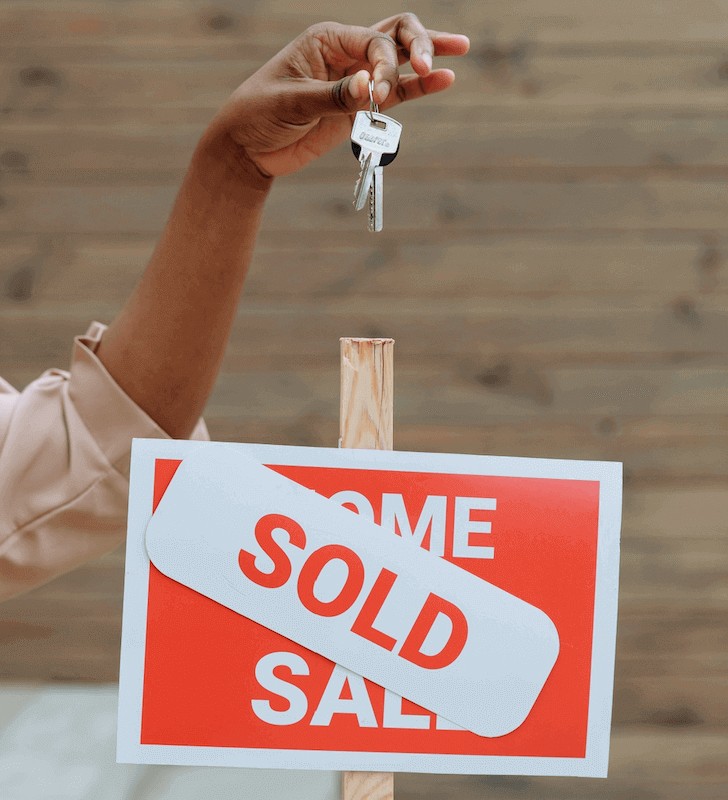
Get The Right Valuation
One should not simply guess the valuation of their property when they put it out to market or take a valuation based on an online calculator. Some property experts suggest getting valuations from 3 different surveyors and getting their opinion in terms of how much you should put the property on the market for and who is the ideal buyer. Should you be pitching to families? The elderly? Getting the right amount is important especially that potential buyers typically bid underneath the asking price. (Source: Which.co.uk)
Decide Who Is Going To Sell Your Home
This is crucial when selling your home and the most obvious option is to try to sell through your local estate agent. They will know the area very well and what to expect, unless of course you know and live in that area already. Estate agents will also have some very interested buyers on their books already who will be looking to move, maybe chain-free. Not only can they provide you with signage to put in front of your house, they will also give your property exposure in local newspapers, magazines, shop windows and online portals like Zoopla and Rightmove. The only issue with using an estate agent is whilst they might be free or low-cost in the short-term, they tend to charge a sale fee of 1.5% to 2% and this can eat into your profits as a developer.
Other options include trying to sell the property on your own or using new alternative sites like Tepilo or HouseSimple where you pay a one-off fee ranging from £495 to £795 to put your property on property portals like the ones mentioned above. Whilst this is much lower rate and way to avoid estate agency fees, it means that you have to play the agent and show people around the house and book appointments etc. If you have all the information and the charisma to keep up, this can be a viable and cost-effective option.
Get Some Kerb Appeal
This is the term coined to make your house look good from the kerb. This includes making sure exteriors such as the front door, windows, paintwork, front garden and number sign all look presentable for passers-by and potential buyers. These very subtle and cost-effective changes can make a world of difference to the amount of interest that your property gets and since people like their homes to look nice, it can be the difference between a sale and not.
Start by putting some nice flower pots outside your home and making sure that your door looks spick and span. You only get to make one first impression, so make sure that it's a good one.
Create a Smell
Similar to the first impression, visitors get a smell when they work in and the last thing you want is for it to be smelling like your domestic pet or kid's football kit. Give the punters something nice to whiff on with a vanilla diffuser costing only a few pounds from your local supermarket. There are rumours that putting fresh bread in the oven or the smell of coffee can trigger the senses, making people feel at home and more likely to show interest.
Give Them Room
No one likes the homeowner cramping their style. It is important not to hang around or pester the visitors and get them the space they need to look around. It is also essential that you do not seem overly keen or desperate when trying to make the sale as this will give off the wrong vibes and make the buyer think that they can bid lower than necessary, eating into your bottom line.
Should You Try Getting Cash For Your Home?
There are a number of companies that specialise in giving you cash for your home and this allows for a sale within just a few days or weeks, compared to pre-longing for several months. Companies such as Nested and Ask Susan can assist with that quick sale and turn you into a cash buyer very quickly, but just note that they will typically undervalue the property for the convenience of a fast deal. In addition, they may have to take a view on properties with complications.
Choose The Best Buyer
Once the offers are on the table, your next big job is to choose the most reliable buyer. The best ones to have are those that are 'chain free' meaning that they do not need to sell their existing home in order to move into yours. According to statistics, 10% of property buyers in the UK are chain-free.
Being without chains speeds up the process massively and means that they have a good idea of how much they can afford and can also move in as soon as possible. Other good buyers include those in rented accommodation because it also suggests a quick move is on the cards. In addition, those that are cash buyers, meaning that they do not require a mortgage allows for a speedier process and fewer property chains involved.
What Happens If You Cannot Sell?
When you have used a bridging loan to purchase your property and make renovations, you will have around 12 to 24 months in order to make repayment. So the idea is that you make the sale before or around this time so that you can exit and repay your loan.

However, depending on the building work and the demand, there is always the chance that your development does not sell. However, you do have options:
Rent It Out
Rather than sell, there might be a bigger demand for tenants so you can always rent out your property on the open market. Your bridging lender will appreciate that you are still generating income and they will give you options in terms of making repayments.
Sell Through An Auction
If you are desperate to sell, you can auction off the property through the different auctioneers and houses. This has become big business in the UK and through auction finance, people have to complete the entire sale within 28 days or risk losing the property - so it is an effective way to move your estate. The only issue is that people typically go to property auctions to get a discount so you may find that your asking price is cut by 20%.
Refinancing
Bridging lenders will commonly allow you to refinance your loan if you do not sell by the end of the loan term. Of course, there are several factors that come into it such as the state and condition of your project and your plans for it. The terms will likely be different and less favourable, but it still gives you some extra time in order to sell your property and generate a high return.
Ways to Increase the Value of Your Home or Property
At Octagon Capital, we appreciate that the majority of people applying for bridging finance are using the funds to renovate or refurbish an existing property. This could be their own property or one that they are looking to fix up and rent out to the public or resell on the open market.
With this in mind, developers and investors are always going to be looking for ways to add value to a property and maximise their returns. Sometimes there are limitations to how much you can actually add due to space restrictions but some clever ideas mentioned below can help you make the most of your investment, taken Phil Spencer's guide in The Telegraph:
- 1. Loft conversion (20%)
- 2. Add a Basement (30%)
- 3. Convert the garage
- 4. Pave over front garden
- 5. New kitchen (4.6%)
- 6. Add a conservatory (7-11%)
- 7. Have a tidy up
- 8. Add central heating
- 9. Add solar panels
1. Add a Loft Conversion - Increase by 20%
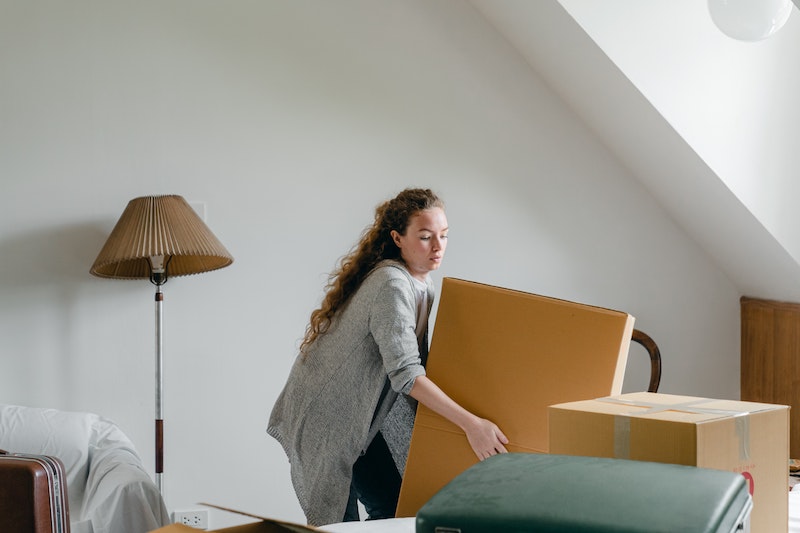
A loft extension is one of the most straightforward ways to increase the value of your home. Whether it is turned into another bedroom, shower room, kids room or home office, you benefit from the additional living space and the best thing is that the work can be completed in a few months without you having to leaving your home. A quality loft conversion starts at around £25,000 for an addition bedroom and bathroom according to Premier Lofts, but this can add 20% to the value of your property.
There are some things you will need to do, such as strengthening the floor joists and raising the floor levels. The best approach to a loft is to make it look natural and not fitted on. You will require planning permission from your local council and the whole process from planning to build can take around one year.
2. Add a Basement - Increase by 30%
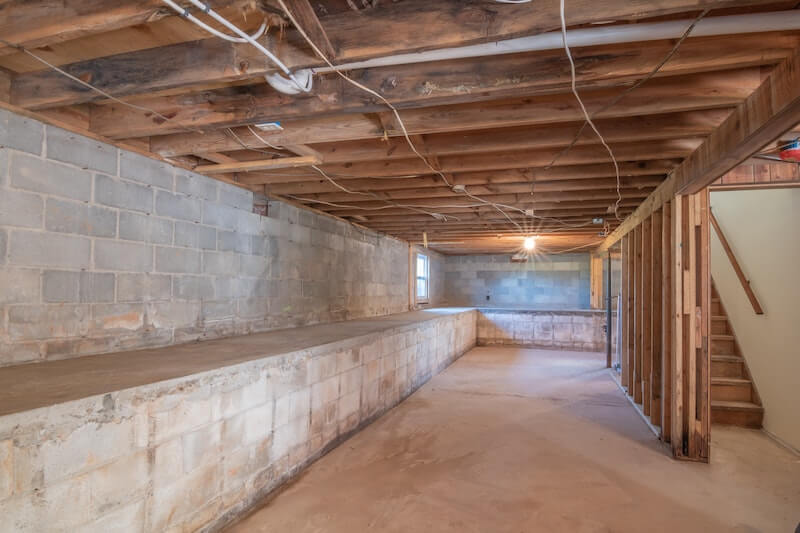
This is going to be the biggest factor that can maximise the value of your property development. Ideally you want to get in there early, especially if it is a new build because otherwise all the drilling and work involved will mean that you will have to vacate your home for a period of time.
To calculate the potential return on a basement all comes down to the value per square foot. On average, it costs £200 per square foot to do the digging and then £100 per square foot to do the work, that is how the contractors charge. So unless your property's sq foot is worth at least £300, you will not see a positive return on investment. But, if the neighbouring homes are worth around £500 to £900 sq foot then investing in a basement is a great opportunity and for every £1 you spend, you could be making back around £3.
A basement opens all new kinds of possibilities for living space, extra bedrooms, utility rooms or play rooms. They also look even cooler if you keep the stone brick effect. In Europe and the US, basements tend to come as standard but we seem to be lagging behind in the UK, which makes them all the more unique and valuable.
3. Get Rid of The Garage
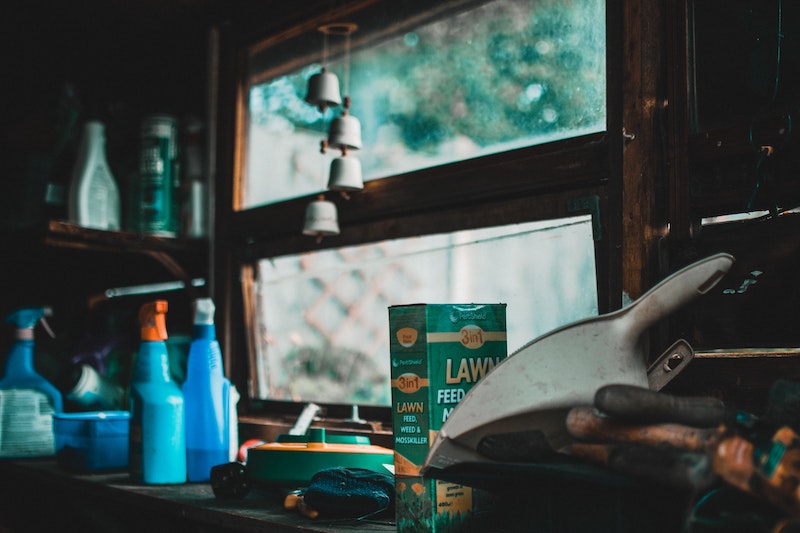
Whilst a garage can sometimes be a selling point and way to increase the value of the home, you need to think about it logically. Apparently, 90% of garages in the UK are used and are just filled with junk. So you have to cost it out. If the value per sq foot is valuable in that area, turning the dusty old garage into another living space could be worth a lot. With a standard conversion of this nature costing around £10,000, you need to calculate the potential return. This renovation may not necessarily require planning permission because you are not building on top or extending the property.
4. Pave Over The Front Garden - Worth up to £50,000
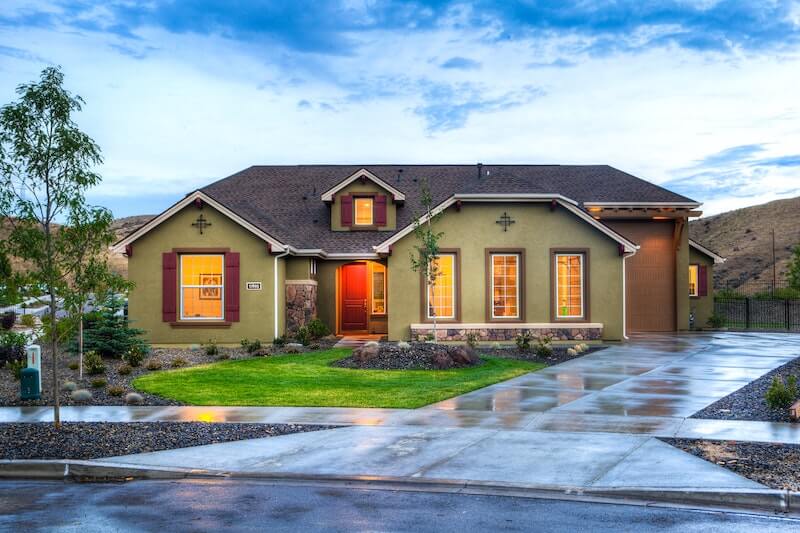
Sometimes a front garden can look very nice but if it is only small, it can be a lot of upkeep for very little use. Of course it depends on the circumstances, but in a very busy urban space (like the centre of London), it could be worth paving over the driveway so that you can fit another car on the forecourt. Whilst this could cost around £10,000 to do, extra parking could be invaluable in such a busy area and it can potentially add up to £50,000 to the overall value of the estate.
5. New Kitchen - Increase by 4.6%
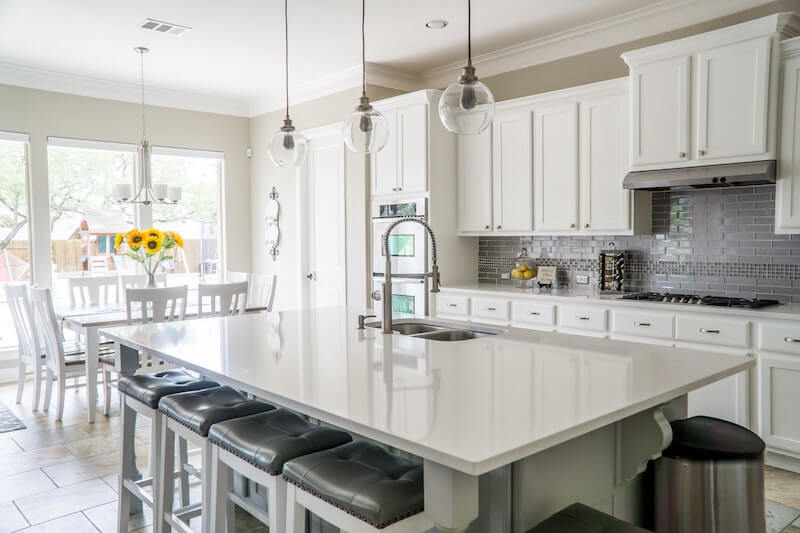
The kitchen is pretty much the busiest room in the house, its where you start your day and hang out after school or work. If you are a developer looking to resell or rent out the property, a well-fitted kitchen with modern appliances is essential. This includes sink, taps, fridge, stove and oven - and having the most up-to-date utilities will keep the home in good stead for the next 10 years, rather than being outdated with old appliances.
Whether or not to invest in a new kitchen comes down to the numbers. For instance, there is no point investing in a £25,000 kitchen in a home only worth £250,000 or equally spending £10,000 on a kitchen for a home worth around £1 million as it will bring the value of the home down. You need to find that sweet spot so that it can increase the quality of living and value of your home and doing so can help you add value by up to 5%.
6. Add a Conservatory - Increase by 7 to 11%
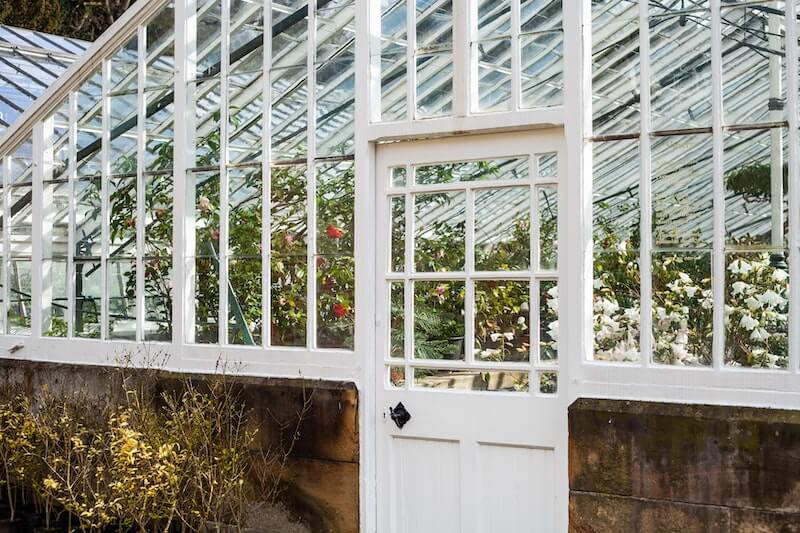
A conservatory is a nice additional living space to add to your home and can be used as a TV or eating area. The best ones are those that match the style of the house and become a natural part of it, rather than looking like they have been 'fitted on.' If your garden gets a lot of sunlight, maybe because it is South facing, it will continue to light up your home for extra hours of the day and warm up the house too, so you can save on your electricity and heating. With the cost of a conservatory ranging from £5,000 to £30,000, it can add between 7% and 11% on the value of your home, depending on the quality and build.
7. Tidy Up The Place, On The Cheap
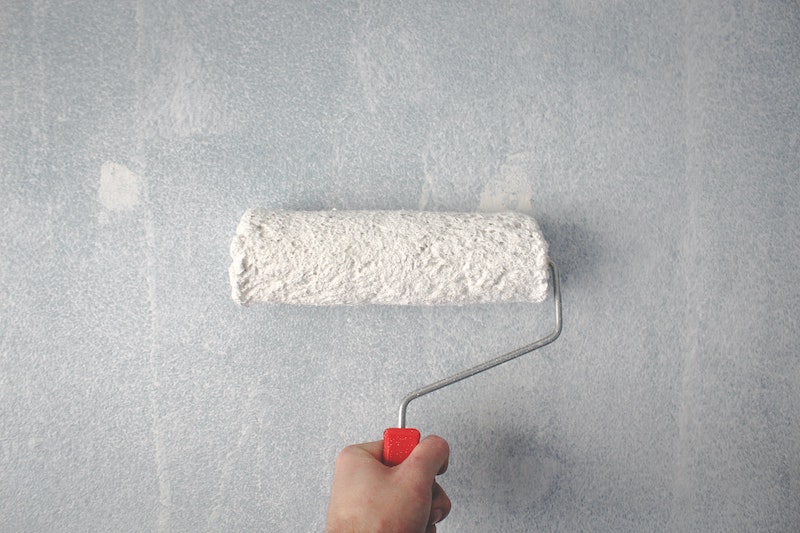
Not all the best ways to add value to a home or flat require spending thousands of pounds. Even just updating the basic aesthetics can make the house seem so much more approachable and perceived more valuable in the eyes of the potential buyer. Our examples include:
- Replacing the front door and garage door with a more modern one
- Replacing doors and doorknobs around the house
- Getting new windows to match the style of the house and double glazing as a minimum is recommended
- Adding a fresh coat of paint to spruce up the exterior
- Planting more flowers in the front and back garden. It does not need to be a landscaping masterpiece but doing to your local garden nursery and picking up some plants can make all the difference.
- Even getting a new house number or signage for the house will make it look superior.
This list is commonly known as 'kerb appeal' which refers to making your house look better to those that see your house from the outside, or 'on the kerb.'
Source: Home Building
8. Central Heating
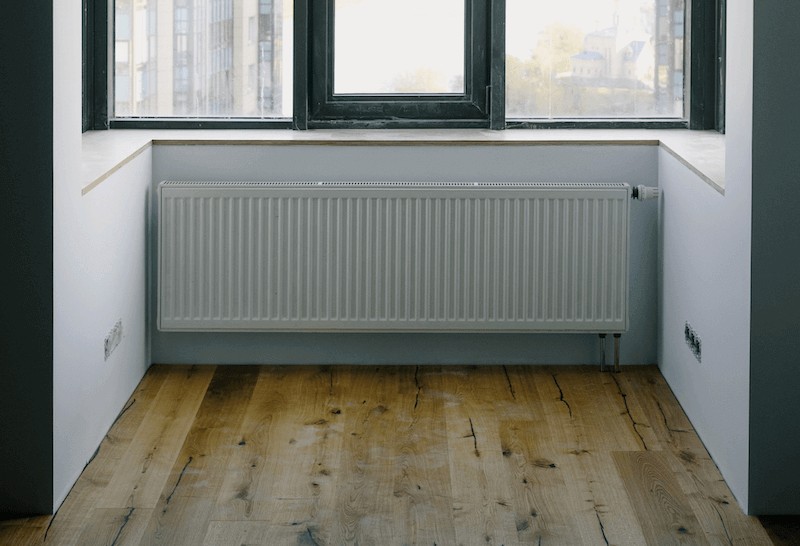
Although this already may be in your home, it is considered an essential and new tenants or buyers will not want to have to install or pay extra for it. Costing around £1,000 to £3,000, it can add up to £5,000 to the value of your home. And remember that you don't have to pay for a new central heating system all at once, you can pay in monthly installments using boiler financing.
9. Add Solar Panels

A great way to look green and modern, adding solar panels can help you or potential buyers save big on their energy bill. It is a long-term game and may take over 20 years to break even, but there are government grants where you can get solar panels for free and use them wisely can be a good investment. Costing around £5,000 to £7,000 to install, MoneySavingExpert says that you will save an average of £300 per year on your utility bill which equates to around £6,000 of savings over the next 20 years.
10. Things To Avoid
Don't over-spruce: Avoid making the property too valuable and don't go nuts on adding everything under the sun. You have to consider what property prices are worth on that road and that area. If every other home on the street is worth around £500,000, new buyers are unlikely to pay double to be on the same road and it will just be out of place.
Avoid DIY jobs: When it comes to making renovations, avoid using the cheapest contractors or DIY jobs as this may cause more problems done the line for tenants and new buyers if you need to make replacements.
Go easy on the furniture: Although new furniture can make a place look very smart, it does not contribute to the value of the property because new buyers are likely to have their own furniture. Even if they do want it, they will likely want it at a bargain and you may not get exactly what you spent on it.
